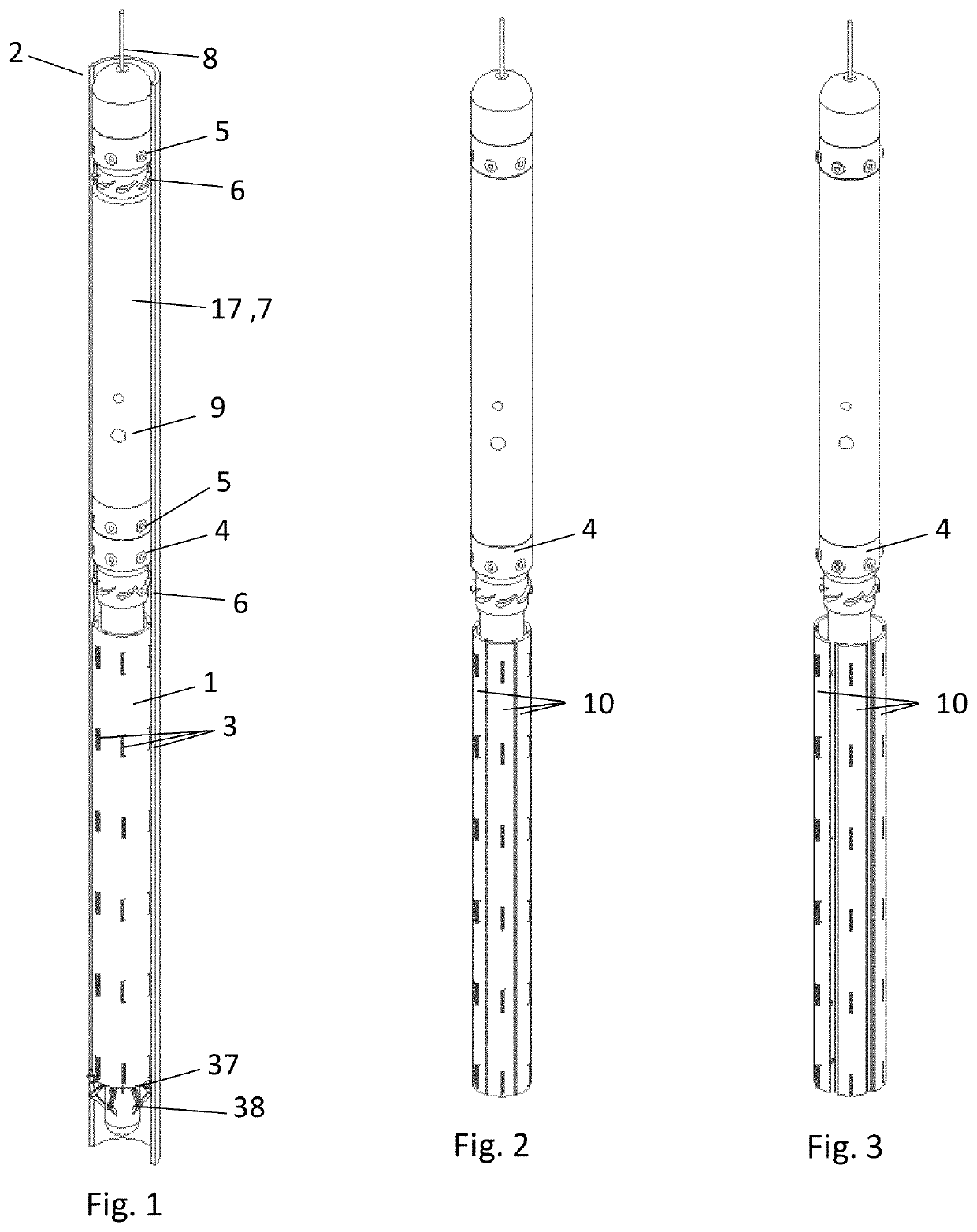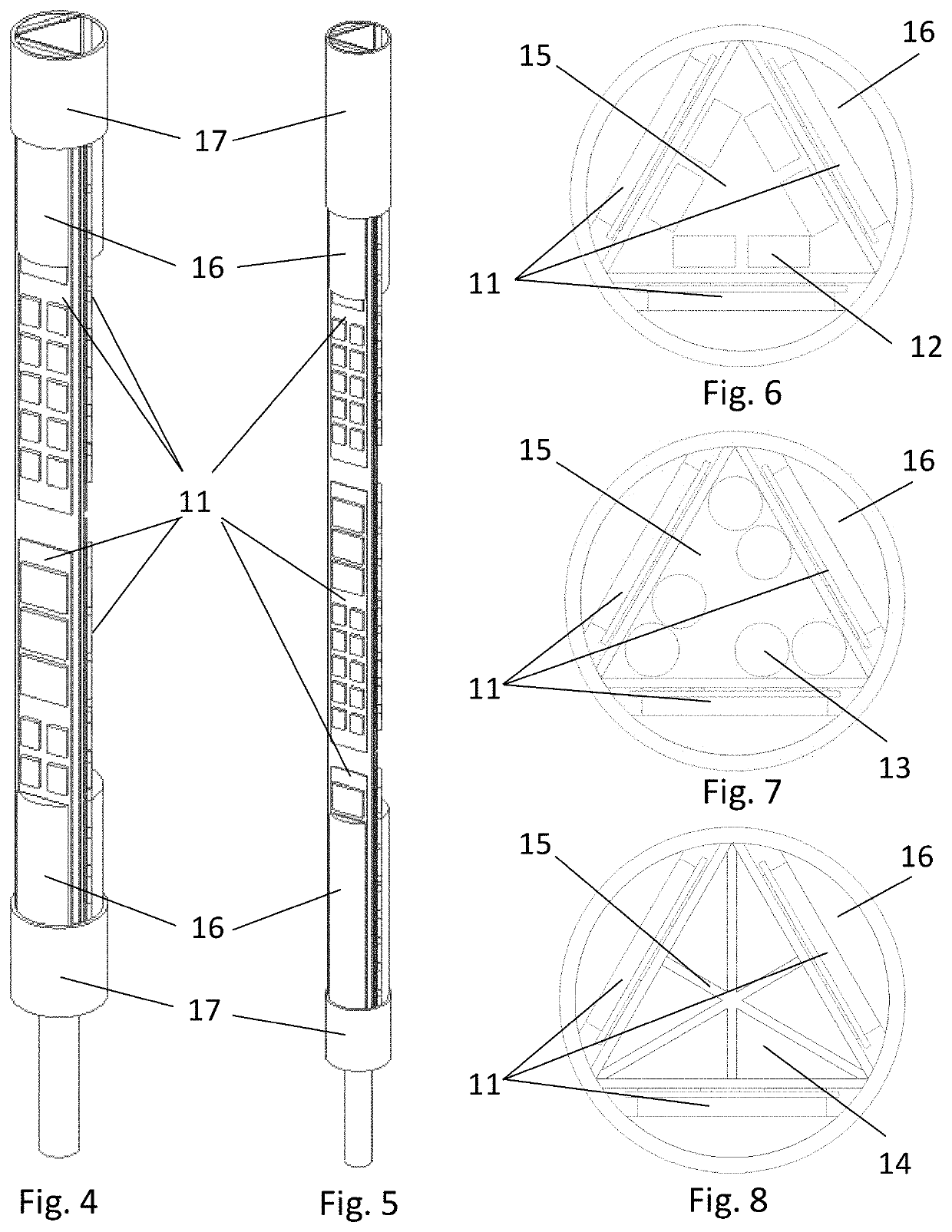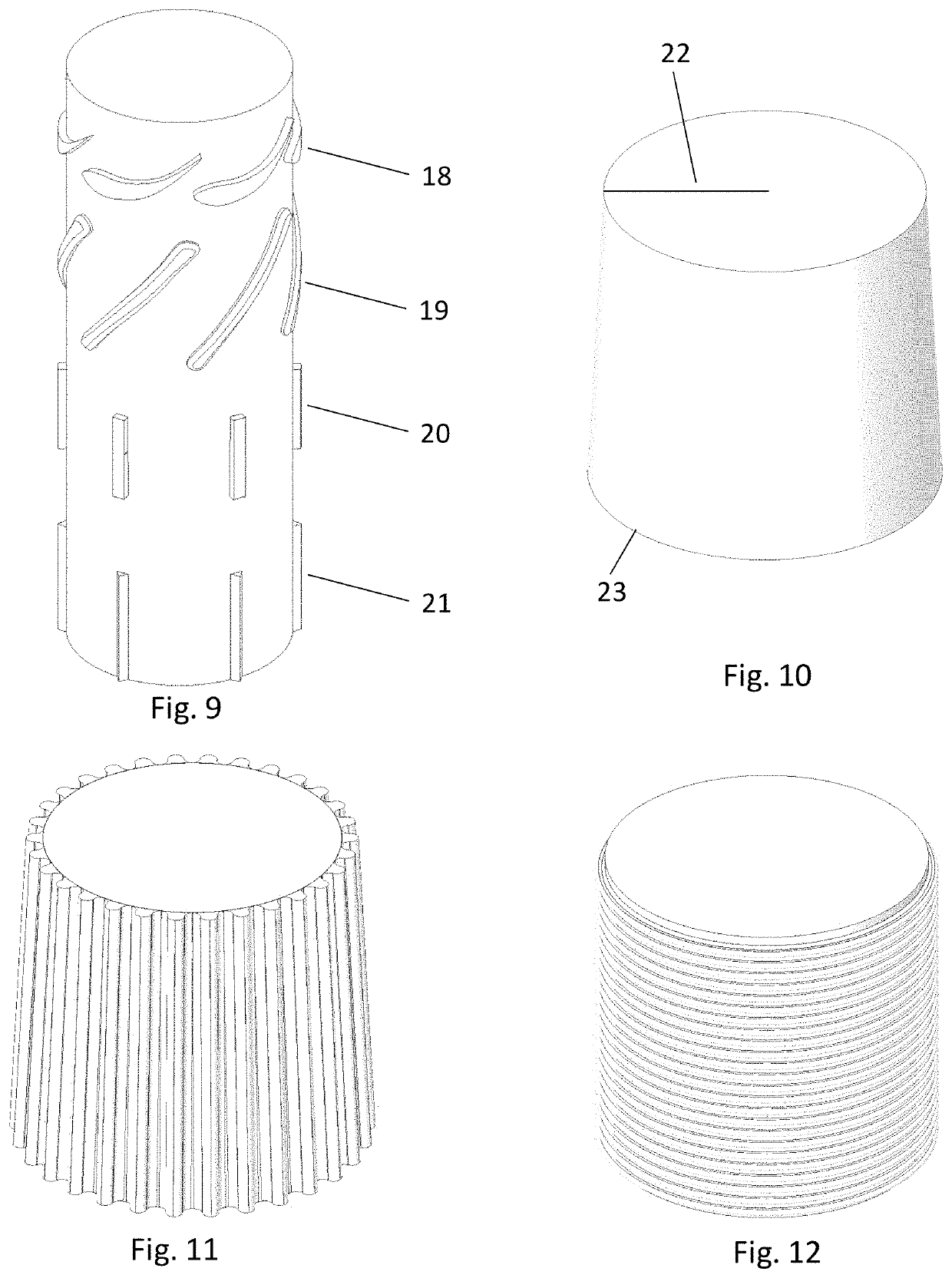Downhole tool
a tool and tool body technology, applied in the field of downhole tools, can solve the problems of corroding faster in the lower region of the pipe, containing high levels of electrical noise, etc., and achieve the effects of reducing current density and power consumption, increasing cathode surface area, and reducing power consumption
- Summary
- Abstract
- Description
- Claims
- Application Information
AI Technical Summary
Benefits of technology
Problems solved by technology
Method used
Image
Examples
Embodiment Construction
[0114]As seen in FIGS. 1, 2, and 3, the downhole tool comprises several components. In FIG. 1, the tool is shown inserted in a metal tubing 2 of a wellbore, which contains a conductive brine. The tool comprises a connection 8 to the surface, for instance a wire. Clamping elements 5 may be equipped with expandable parts that can apply a force on the inside of the metal tubing 2 in order to hold in place and centralize the tool. An enclosure 17 is provided, which may contain a power unit 7 for converting the electrical power delivered from a surface power supply (not shown) into the required electrical current to be delivered to the conductive elements 1,10 and other components. The enclosure 17 may also contain downhole batteries to provide power or an alternative source of electrical power to the downhole tool and conductive elements 1,10 and many of the additional components which may be required to operate the downhole tool. Among many other functions, these additional components ...
PUM
| Property | Measurement | Unit |
|---|---|---|
| height | aaaaa | aaaaa |
| depths | aaaaa | aaaaa |
| depths | aaaaa | aaaaa |
Abstract
Description
Claims
Application Information
 Login to View More
Login to View More - R&D
- Intellectual Property
- Life Sciences
- Materials
- Tech Scout
- Unparalleled Data Quality
- Higher Quality Content
- 60% Fewer Hallucinations
Browse by: Latest US Patents, China's latest patents, Technical Efficacy Thesaurus, Application Domain, Technology Topic, Popular Technical Reports.
© 2025 PatSnap. All rights reserved.Legal|Privacy policy|Modern Slavery Act Transparency Statement|Sitemap|About US| Contact US: help@patsnap.com



